Assessment for Digital Technologies (Oct 2018)
This webinar will walk you through an approach to generate assessment activities using Bloom’s Revised Taxonomy. Rebecca will demonstrate how to use the achievement standards and content descriptors as a guide for breaking down and identifying the skills, behaviours and knowledge you are seeking students to demonstrate. We’ll refer to the use of checklists, student interviews (think alouds) and rubrics. We will also use the SOLO Taxonomy as a way of differentiating a task and using this as a basis for assessment.
Additional details
| Year band(s) | Foundation, 1-2, 3-4, 5-6, 7-8, 9-10 |
|---|---|
| Content type | Professional learning, Assessment advice |
| Format | Video |
| Keywords | Webinar |
| Organisation | ESA |
| Copyright | Creative Commons Attribution 4.0, unless otherwise indicated. |
Related resources
-
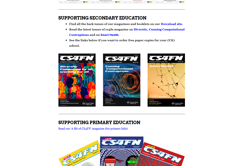
Teaching London Computing
Find activities for learning about Computer Science in fun ways on this site based on our underpinning Computer Science Education research.
-
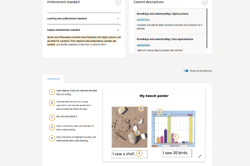
Work Samples
This site provides access to annotated work samples in accordance with the Australian curriculum for years F-10.
-
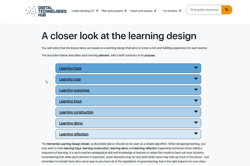
Lesson learning design
The Elemental Learning Design Model has been used to design our lesson plans. This module includes key components to design effective learning opportunities including, learning hook, learning input, learning construction, learning demo and learning reflection within a sequence of learning.
-
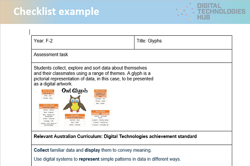
Checklist example
This checklist template example is focused on a task where students collect, explore and sort data about themselves and their classmates using a range of themes.
-
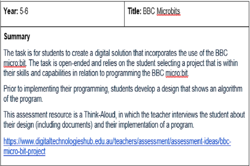
Think aloud example
This assessment resource is a Think-Aloud, in which the teacher interviews the student about their design (including documents) and their implementation of a program.
-
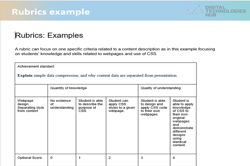
Rubric example
This rubric can focus on students’ knowledge and skills related to webpages and use of CSS.
-
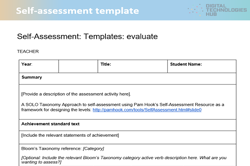
Self-assessment template
This template can be used for Digital Technologies related tasks that enable students to self-assess.
-
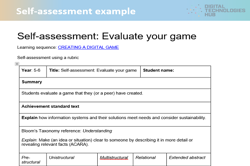
Self-assessment example
This example of a self-assessment uses a rubric to assess learning about creating a digital game.
